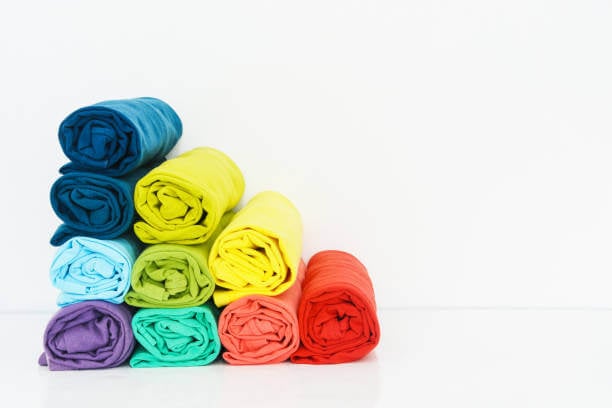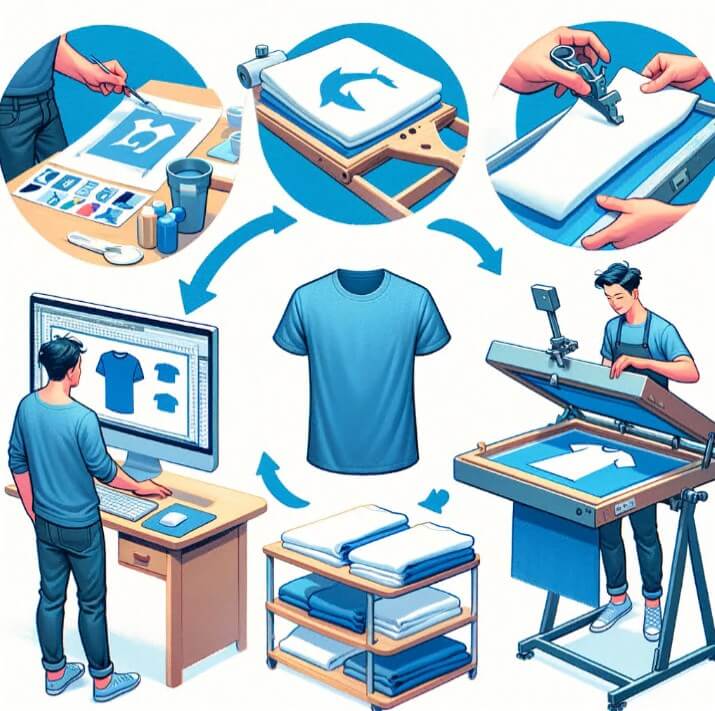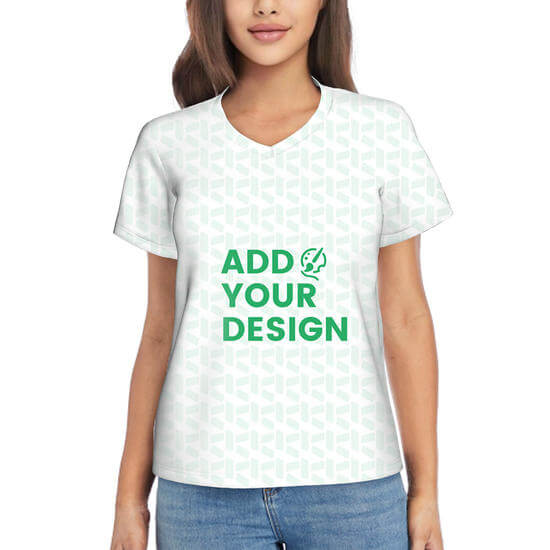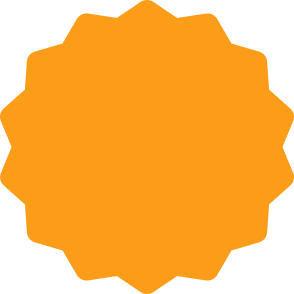
In the ever-evolving world of fashion, custom T-shirts have emerged as a canvas for creativity and expression. As we step into 2024, this trend continues to flourish, offering a myriad of opportunities for entrepreneurs, small business owners, and creatives. Whether you're looking to start a new venture or add a personal touch to your brand, learning how to make custom T-shirts is an exciting journey. This comprehensive guide will walk you through the latest trends, the essentials of making T-shirts at home, and tips for selling them online.
Custom T-Shirts Trends in 2024
In 2024, custom T-shirt trends are evolving to reflect both modern aesthetics and technological advancements. Designers are increasingly focusing on sustainability, with eco-friendly materials and ethical production methods gaining prominence. This shift not only resonates with environmentally conscious consumers but also sets a new standard in the fashion industry. Additionally, the integration of digital art and augmented reality in T-shirt designs is becoming more prevalent. These technologies allow for more intricate and interactive designs, appealing to a tech-savvy audience and offering a novel way for brands to engage with their customers.
Moreover, the trend of personalized and localized designs continues to grow. Consumers are looking for T-shirts that not only showcase unique artistry but also resonate with their personal stories or local culture. This demand for personalization is driving designers and brands to create more diverse and culturally relevant designs. This approach not only caters to a wider audience but also allows for deeper connections with customers, as each T-shirt tells its own unique story.
Why You Need to Make Custom T-Shirts?
Custom T-shirts offer a unique avenue for personal expression and brand storytelling. They serve as a canvas for creativity, allowing individuals and businesses to showcase their style, values, or humor in a way that resonates with their audience. This personalized approach to fashion isn't just about aesthetics; it's a powerful tool for building brand identity and fostering community engagement.
Moreover, for entrepreneurs and small business owners, custom T-shirts present an economical yet effective marketing strategy. They're walking advertisements, spreading brand awareness with every wear. For artists and designers, they provide a tangible medium to display their art, reaching a wider audience. In essence, custom T-shirts bridge the gap between personal expression and commercial appeal, making them an indispensable tool in today's dynamic market.
How to Make Custom T Shirts at Home?

Creating custom T-shirts at home offers two primary methods, each catering to different needs and skills.
The first method involves a hands-on DIY approach. This process begins with selecting the right materials, such as high-quality cotton or cotton blends, known for their smooth printing surface. Next, you design your T-shirt, which can range from simple hand-drawn illustrations to sophisticated digital graphics. Tools like Adobe Illustrator or free online design software can assist in this creative process. For printing, you have several options. Screen printing works well for bulk orders, while direct-to-garment (DTG) printing is ideal for detailed, color-rich designs. For beginners, heat transfer printing is an accessible choice, requiring only an inkjet printer and transfer paper.
The second method leverages the convenience of print-on-demand (POD) platforms like Printify or PrintKK. These platforms simplify the custom T-shirt creation process significantly. You upload your design, and the platform takes care of the rest, from printing to shipping. This method is particularly beneficial for entrepreneurs and small business owners who seek to scale their operations without heavy investment in equipment and inventory. POD platforms offer a wide range of materials and advanced printing techniques, ensuring a high-quality final product. Additionally, they integrate seamlessly with e-commerce platforms, making the sale of custom T-shirts effortless. This method is perfect for those who value efficiency and quality, and who are looking to reach a broader market without the complexities of managing the production process themselves.
What Is Print on Demand?
Print on Demand (POD) is a game-changer in the custom apparel industry, particularly for T-shirts. It's a process where individual copies of products are printed only after an order is received. This method revolutionizes traditional inventory and manufacturing approaches, especially for entrepreneurs, small business owners, and designers.
With POD, there's no need for bulk orders or pre-printed stock, significantly reducing the risks and costs associated with unsold merchandise. Once a customer places an order, the POD service, such as Printify or Printful, prints the chosen design on the T-shirt and ships it directly to the customer. This model offers incredible flexibility, allowing for a wide range of designs without the commitment to large quantities.
The beauty of POD lies in its accessibility and scalability. It's an ideal solution for artists and designers wanting to sell their designs without the hassle of managing inventory and production. Brands and influencers can quickly launch merchandise lines, testing the market without major upfront investments. Corporations and organizations also benefit, as they can produce branded apparel on an as-needed basis.
Custom T-Shirts Design Ideas
When it comes to custom T-shirt design ideas, creativity is your only limit. Whether you're an entrepreneur, a designer, or part of a larger organization, the key is to create designs that resonate with your target audience. Consider incorporating current trends, like minimalist designs or bold typography, into your T-shirts. Pop culture references, humorous quotes, or inspirational messages are always popular. A couple of design ideas are as follows:
- Trend Incorporation: Embrace the latest fashion trends in your T-shirt designs. For instance, minimalist designs offer a clean, modern look, while bold typography can make a strong statement. These styles resonate with those who appreciate contemporary aesthetics.
- Pop Culture and Humor: Utilize elements from popular culture or humorous quotes to create relatable and fun T-shirts. These designs can range from famous movie lines to trendy internet memes, appealing to a younger, more social media-savvy audience.
- Inspirational Messages: Incorporate motivational quotes or messages that inspire positivity. For example, uplifting sayings or empowering words can resonate deeply with individuals seeking encouragement.
- Original Artwork: Artists can display their unique talent, whether it's abstract patterns or intricate illustrations. These types of T-shirts become wearable art, appealing to customers who value originality and creativity.
- Brand Identity: For brands and influencers, T-shirts can reflect the ethos or message of their brand. This might mean a logo-centric design or a slogan that captures the brand's spirit.
- High-Quality Graphics: Prioritize high-resolution images to ensure clarity and detail in the print. This is essential for designs that are rich in color or have intricate details, ensuring they look professional and are visually appealing.
- Storytelling: Aim for designs that tell a story or convey a specific message. This could be a personal narrative, a historical event, or a fictional tale, providing a deeper connection with the wearer.
- Feedback and Experimentation: Regularly seek feedback on your designs and be open to experimentation. This iterative process can lead to innovative designs and helps in understanding what resonates best with your audience.
The Cost of Making a Custom T-Shirt
Understanding the cost of making a custom T-shirt is crucial for entrepreneurs, designers, and businesses entering the print-on-demand (POD) market. This cost typically includes several components:
- Material Costs: The cost of the blank T-shirt itself varies based on quality, brand, and fabric. Higher-quality materials generally cost more but offer better print results and durability.
- Design Costs: If you're outsourcing the design work, factor in these expenses. Design complexity can affect the price.
- Printing Costs: This varies depending on the printing method used. Screen printing may have setup fees but is cost-effective for bulk orders. Direct-to-Garment (DTG) printing is pricier but offers more detailed prints with no setup fee.
- Shipping and Handling: If using a POD service, shipping costs are often included in the price you pay the provider.
- Miscellaneous Expenses: Include any additional costs such as tags, labels, or custom packaging to enhance brand identity.
- Profit Margin: Consider your desired profit margin. The retail price should cover all the costs mentioned and provide a reasonable profit.
For those using POD services, many of these costs are simplified as they handle material procurement, printing, and shipping. However, understanding these individual cost components is essential for pricing your custom T-shirts effectively and ensuring a profitable venture.
Create Custom T-Shirts with PrintKK

Creating custom T-shirts with PrintKK offers a streamlined, user-friendly process ideal for entrepreneurs, designers, and businesses of all sizes. Firstly, PrintKK provides a platform where you can easily upload your T-shirt designs. Their system supports various file formats, ensuring compatibility and ease of use. Once uploaded, you can select from a range of T-shirt styles and materials, catering to diverse preferences and needs.
The real advantage of PrintKK lies in its print-on-demand model. This approach means that T-shirts are only printed when an order is placed, significantly reducing inventory costs and risks. Additionally, PrintKK offers high-quality printing techniques, ensuring that your designs are reproduced with clarity and vibrancy.
Moreover, PrintKK handles the logistics of shipping and customer service, which is a huge benefit for those who want to focus more on design and marketing. Their platform is also equipped to integrate with various e-commerce systems, making it easy to connect your online store for a seamless sales process.
How to Sell Print on Demand T-Shirts Online?
Selling print-on-demand T-shirts online is a lucrative venture for entrepreneurs, designers, and businesses.
- Design Creation: Develop unique designs, like trendy graphics or personalized messages, that appeal to your target audience.
- Production Platform: Utilize services like Printify or Printful, which handle printing and shipping, allowing you to focus on design.
- Online Storefront: Set up a user-friendly e-commerce website or utilize online marketplaces such as Etsy or Amazon to reach a wider audience.
- SEO Strategies: Implement targeted keywords and optimize your website's content to improve search engine rankings.
- Social Media Marketing: Engage with your audience on platforms like Instagram or Facebook by showcasing your T-shirt designs and running promotions.
- Paid Advertising: Invest in online advertising, like Google Ads or Facebook Ads, to target specific demographics and increase visibility.
- Customer Service: Offer responsive and helpful customer support to build trust and encourage repeat business.
- Sales Analysis: Regularly review your sales data to understand customer preferences and trends, allowing you to tailor your offerings.
Conclusion
Embarking on the journey of creating and selling custom T-shirts offers a blend of creativity and entrepreneurship. From selecting materials and designs to leveraging print-on-demand services and digital marketing strategies, each step presents an opportunity for personalization and innovation. This venture not only caters to the aesthetic and expressive needs of a diverse audience but also stands as a testament to the evolving landscape of e-commerce and digital marketing. Aspiring entrepreneurs and artists are positioned to harness these tools and techniques, paving the way for unique branding opportunities and new market trends.
Now is the time to turn your creative visions into reality. Whether you're a budding entrepreneur, a talented designer, or an established brand, the world of custom T-shirt creation and sales is ripe with opportunities. Start designing, use the tools and platforms available, and embark on a journey to make your mark in the vibrant world of custom apparel. Take the first step today and unleash the potential of your creative ideas in the ever-expanding marketplace of custom T-shirts.
FAQs
Are custom T-shirts legal?
Creating custom T-shirts is generally legal, as long as the designs used don't infringe on others' intellectual property rights. It's crucial to ensure that any logos, images, or texts used in your designs are either original, licensed, or in the public domain to avoid legal issues.
Is making custom t-shirts profitable?
Yes, making custom T-shirts can be profitable, especially with print-on-demand services. By minimizing upfront costs and inventory risks, POD allows for a scalable business model. Profitability hinges on effective design, marketing, and understanding your target market's preferences.
What do I need to make custom t-shirts?
To make custom T-shirts, you'll need a design idea, quality blank T-shirts, and a method for applying your design, such as screen printing, direct-to-garment printing, or heat transfer. Optionally, access to a print-on-demand service can simplify the process, handling production and shipping for you.










 Global Shipping
Global Shipping






 Made in USA
Made in USA























